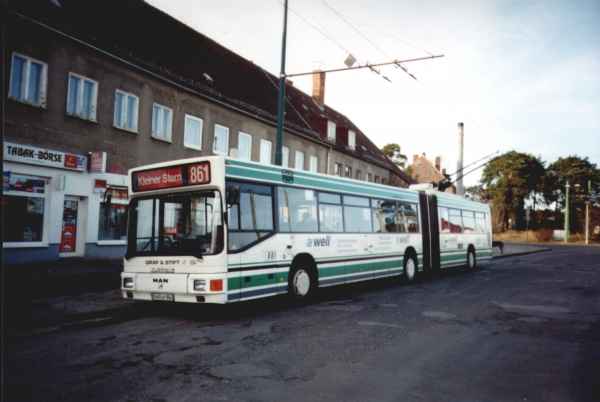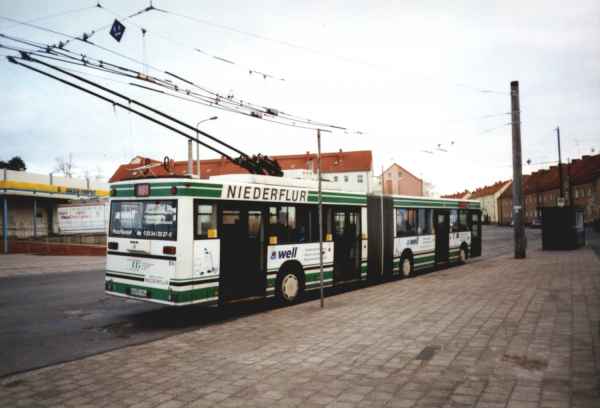
You're here: Main page > 2.2.1.2. Articulated trolleybus of the Austrian type ÖAF Gräf & Stift NGE 152 M17
2.2.1.2. | Articulated trolleybus of the Austrian type |
| Vehicle length | 17400 | mm |
| Vehicle width | 2500 | mm |
| Vehicle height | 3307 | mm |
| Wheel base between 1. and 2. Axle | 5600 | mm |
| Wheel base between 2. and 3. Axle | 6000 | mm |
| Front overhang | 2600 | mm |
| Rear overhang | 3200 | mm |
| Edge angle in front and in the back | each case 7 | ° |
| Vehicle weight unloaded | 15560 | kg |
| Admissible total vehicle weight | 27600 | kg |
| Axle load in front | 6900 | kg |
| Axle load centre | 10000 | kg |
| Axle load in the back | 11500 | kg |

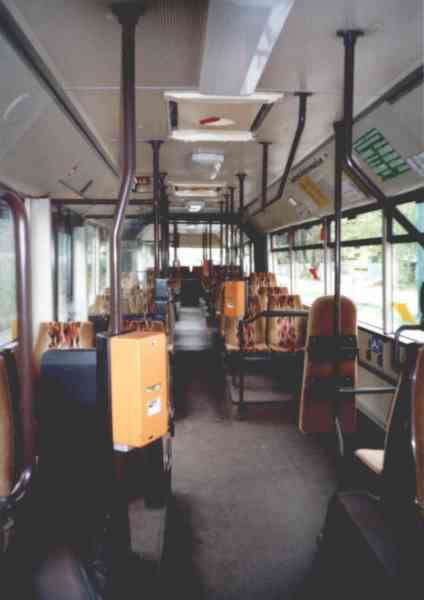
| Power | 149 kW by 1470 rpm |
| Rated voltage | 420 V |
| Rated current | 255 A |
| Rated frequency | 50 Hz |
| Number of poles | 4 |
| Weight | 600 kg |
| Dimensions | 420x420x805 mm |
| Line voltage | DC 600 V (+20%, -40%) |
| Output capacity | 200 kVA continuous |
| Construction | suitable for mounting in the rear of bus |
| Design | pulse inverter directly fed from the line |
| Refrigeration | forced air cooling of isolated mounted GTOs, modules on isolated Heat Pipes |
| Weight | 230 kg |
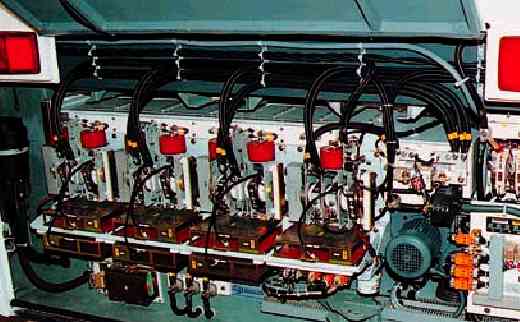
| Construction | 2 storey 19II rack |
| Cooling | natural convection |
| Input voltage | DC 24 V (+20%, -30%) |
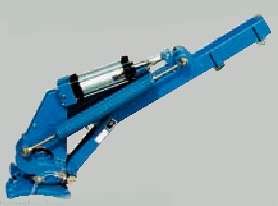 | The trolleybus is equipped with current collector of the type OSA 234. These current collectors are equipped with a pneumatic device for rapid lowering of the pole when dewiring. This device replaces the spring loaded retriever. At each current collector is fixed a cable with a automatic system to roll up the cable. With this cable the driver can put on or remove the current collectors from the trolleybus overhead network. Sensors indicate the dewiring. |
